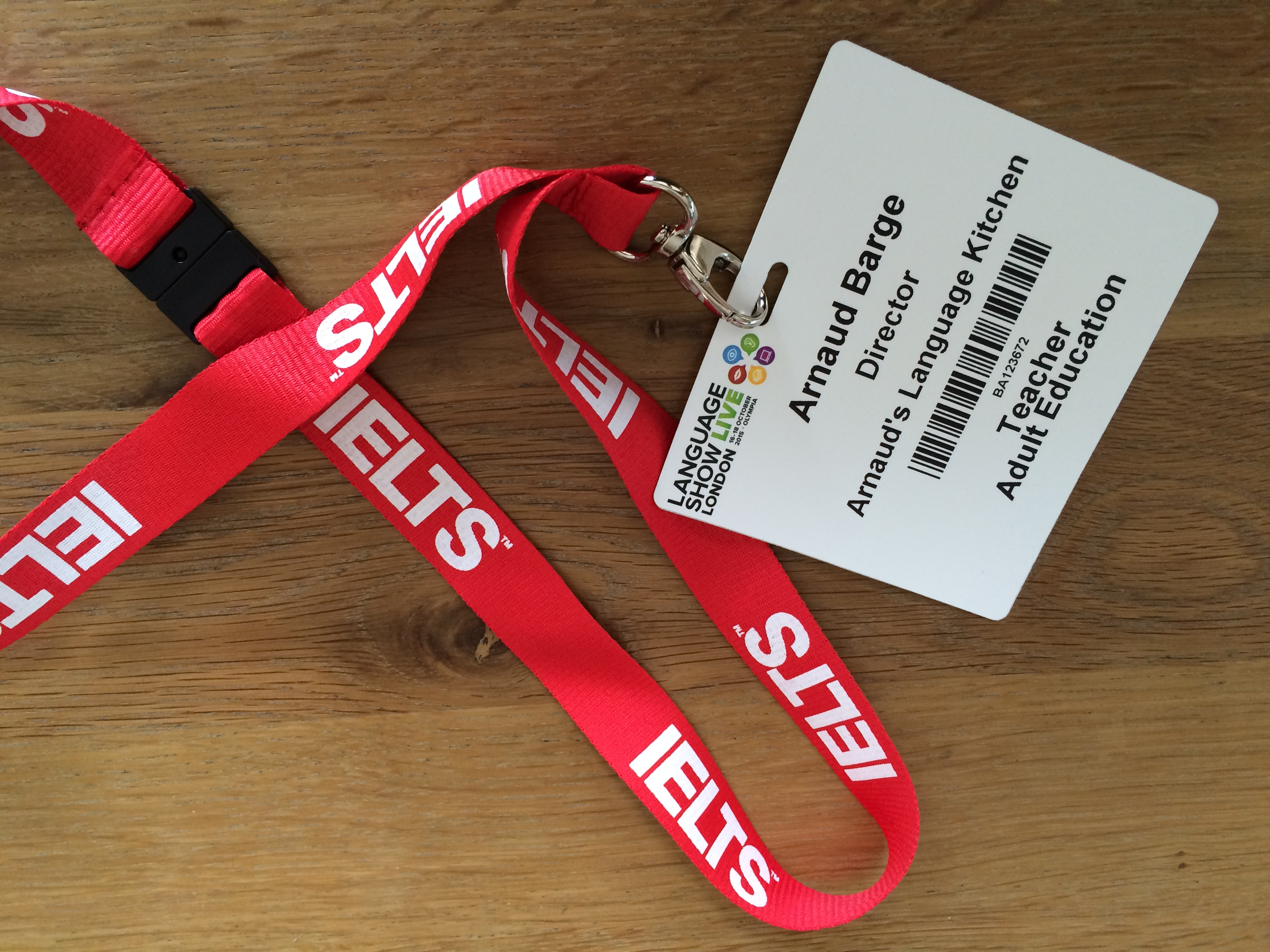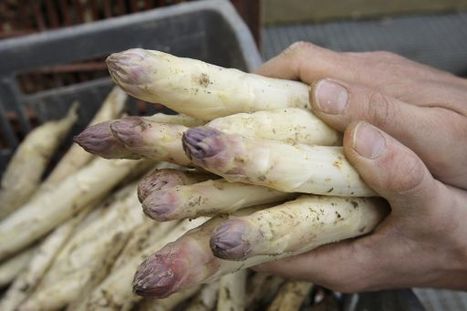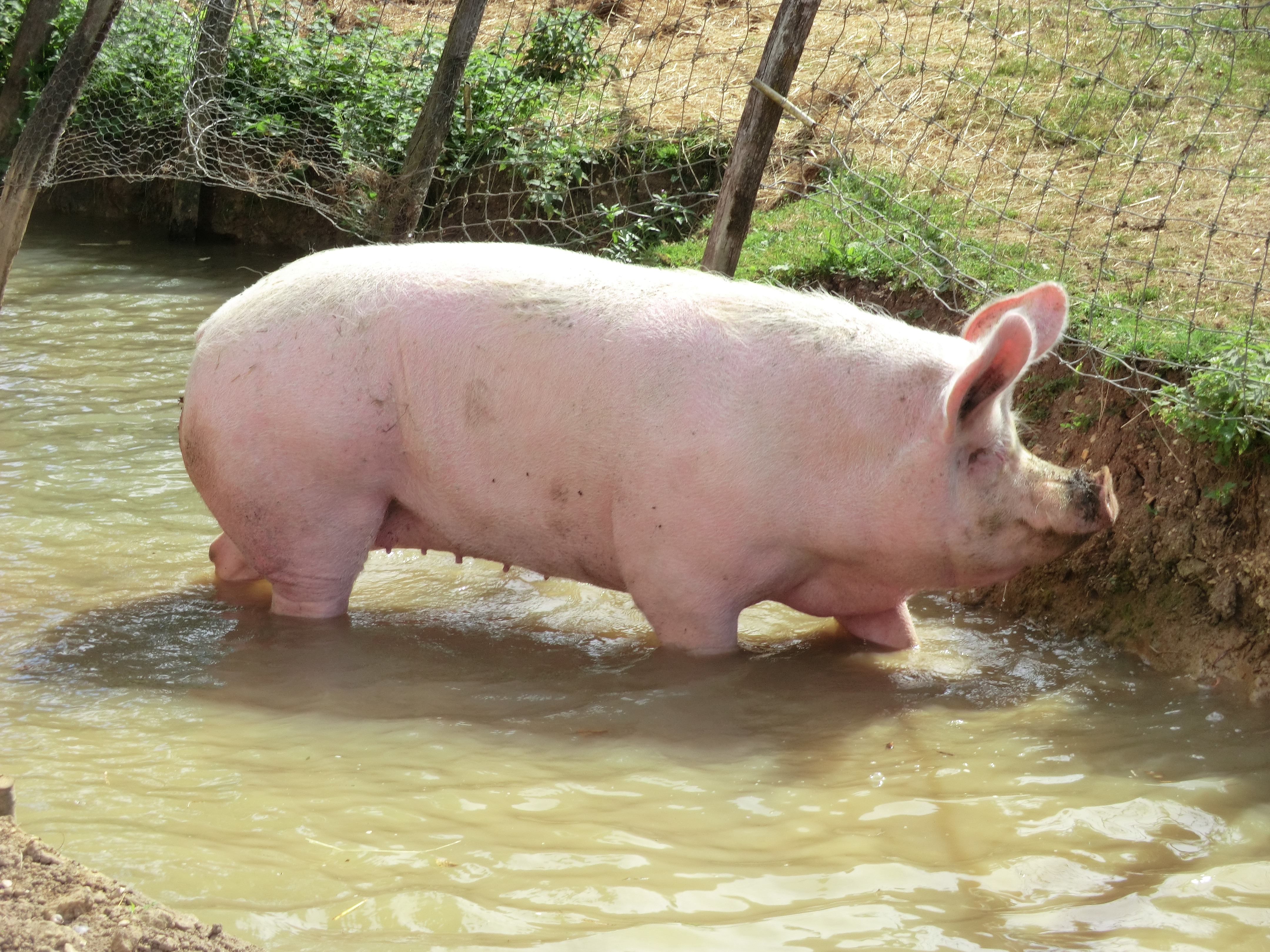
You, assiduous readers, will remember that the Lime on a Bike had the pleasure to meet the enthusiastic (and oh so young!) FlashSticks people during the Language Show Live in London not too long ago. Aside from meeting the team, it was also the perfect occasion to talk about the launch of their new app, which I had the pleasure to test for them. So the least I can do now is to let you have my thoughts on this clever fusion of low and high technology.
Let’s start with the ‘low-tech’ end of the FlashSticks experience. The urge to place those sticky notes all over the place as you open the pack is too hard to resist, as you can see. Colour coded blue for masculine and pink for feminine nouns, they help you juggle the trickiest aspect of French by helping you remember the gender of things, and the green-coded verbs and adjectives are terrifically helpful too!
But onwards to the marvels of technology. Download the app and MAGIC! Those notes come to life: hover your phone over them and a member of the FlashSticks team will show you how to pronounce them. Your own genie in a bottle if you will! And that’s not all. With the premium version of the app, you can also undertake a fabulous journey through those exact same flashcards, learning tons of vocabulary, all very handily classed in categories that will help your brain compartmentalise and cross-reference them. Granted, the use of pretty colours and fun games might not be to everyone’s taste, but I have yet to meet a student who cannot learn when fun is injected into the teaching process.
So learning journey and colourful sticky notes aside, there is a final aspect of the app that never ceases to amaze me, and I have been playing with that function for weeks without tiring of it. The ‘Scan an Object’ function is simply A-MA-ZING. Honestly, it’s like having a little elf or a gremlin in your phone: take a picture of an object, and after a few seconds, there pops a description of said object in French (or any of the many languages other than French you can learn with FlashSticks). It is amazingly detailed, and as such can create some grammatical problems, but hit the ‘simplify’ button, and you have a reliable translation, which you can even hear from a native speaker. Magic, I tell you.
So if you’re looking for a fun way to improve your French (other languages available, as they say!), then I can heartily recommend FlashSticks.
Right, I’m off to find other things to scan… Au revoir!
LA MERVEILLE QU’EST FLASHSTICKS
Assidus lecteurs, vous vous souviendrez sûrement que le Citron Vert à Vélo a récemment eu le plaisir de rencontrer l’équipe FlashSticks, si enthousiaste (et tous si jeunes!), au Language Show Live à Londres. En plus de rencontrer ces jeunes gens, ce fut aussi l’occasion parfaite de causer du lancement de leur nouvelle app, que j’ai eu le plaisir de tester pour eux. Alors la moindre des choses est de vous raconter ce que je pense de cette fusion entre basse et haute technologie.
Commençons avec le coin ‘basse’ technologie de l’expérience FlashSticks. L’envie de placer ces notes collantes tout partout est simplement trop forte pour y résister, comme vous pouvez le constater. Qu’elles soient bleues pour les noms masculins ou roses pour les noms féminins, ces notes vous aident à jongler avec cet aspect le plus bizarre de la langue française en vous aidant à vous souvenir du genre des choses, et les notes vertes pour les verbes et adjectifs sont bien utiles aussi!
Mais passons aux merveilles de la technologie. Téléchargez FlashSticks sur votre téléphone et MAGIQUE! Ces notes prennent vie: faites flotter votre portable au-dessus de l’une d’elles et un membre de l’équipe vous montrera comment la prononcer. Votre propre génie dans la bouteille, en quelque sorte! Et ça n’est pas tout. Avec la version premium de cette app, vous pouvez aussi partir en voyage à travers ces mêmes notes, en apprenant des tonnes de vocabulaire, classé de façon très pratique en catégories pour aider votre cerveau avec le compartimentage et les références croisées. Je vous l’accorde, les jolies couleurs et les jeux amusants ne sont pas au goût de tout le monde, mais je n’ai jamais rencontré un étudiant qui n’apprend rien quand on injecte un peu de facétie dans l’art d’enseigner.
Alors jeux et notes collantes à part, il y a un dernier aspect de cette app qui ne cesse de m’épater, et voilà des semaines que je l’utilise sans m’en lasser. La fonction ‘Scanner un Objet’ est simplement IN-CROY-ABLE. Honnêtement, c’est comme si vous aviez un elfe ou un gremlin dans votre téléphone: prenez un objet en photo et après quelques secondes, voilà la description du dit-objet en français (ou tout autre des langues que vous pouvez apprendre avec FlashSticks). C’est tellement détailé que cela pose parfois quelques problèmes grammaticaux, mais choisissez de ‘Simplifier’, et vous obtiendrez une traduction à laquelle vous pouvez vous fier, et vous pouvez même l’entendre de la bouche d’un Français ou d’une Française pur beurre. Magique, je vous le dis.
Alors si vous cherchez un bon moyen d’améliorer votre français (autres langues disponibles, comme on dit souvent!), je vous conseille vivement FlashSticks.
Bon allez, je retourne chercher d’autres trucs à scanner… Bye bye!







